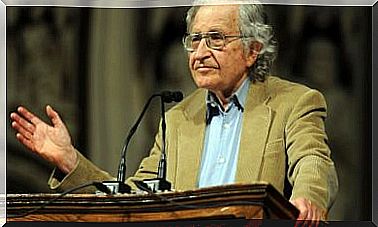What Is Personality?

We are unique and unrepeatable beings, and our psychology is as individual and idiosyncratic as our personality. Everything we live makes a difference, although there are experiences that mark us more than others. Currently, it is known that personality has genetic and hereditary components, as well as environmental ones.
But what is personality really? Does it just have to do with our actions or also with our inner world (thoughts, memories…)? The truth is that it has to do with all of this and more, and personality psychology has undertaken to study this construct. Like? Let’s see below.

What is personality?
This concept has already received several definitions. It is understood as a hypothetical construct that we infer from people’s behavior, and encompasses a series of characteristic traits of the individual. It also includes the way of feeling or thinking, and it is formed throughout life thanks to our experiences, especially in childhood and adolescence.
One of the most complete definitions for this concept is proposed by Bermúdez (1996), who defines it as follows: “personality is a relatively stable organization of structural and functional characteristics, innate and acquired under special conditions of its development, which constitute the specific requirements that define the behavior with which each individual faces different situations”.
What is it for? In addition to defining us as the unique people we are and helping us to build our own identity, personality allows us to successfully adapt to our environment. That is, it has certain adaptive characteristics.
personality psychology
It is the discipline charged with studying the effect of individual personality differences on behavior. Specifically, it is a branch of psychology that delves into the study of this construct and how it varies between people (individual differences).
One of the most relevant authors in this discipline is Gordon Allport (1897-1967), an American psychologist and author of The Personality (1936). In fact, Allport is considered one of the founders of this branch of psychology, and placed special emphasis on the unique character of each individual and the importance of the present context (vs. past history).
What elements does this construct include?
From this discipline, it is proposed that the concept of personality includes two major groups of behavior or characteristics of the individual. These behaviors include :
- The manifest behavior (for example, what actions the person takes or what behaviors they have).
- Private experience (ie desires, memories, thoughts, needs, opinions…).
Thus, personality is a distinct construct of each person, which makes it unique and unrepeatable. However, it is also true that there are specific personality patterns (tendencies to be a certain shape), which in turn include so-called personality disorders.
That is, although each person is a certain way, there are patterns that can be shared by many people. These are what we call traits, which are widely studied in personality psychology.
How can we study it?
We found three major models to study this construct. These models focus on studying behavior to make hypotheses, since behavior tells us a lot about what someone is like. There are three types of templates:
- Internists: behavior is determined by personal variables.
- Situationists: the causes of behavior are external to the individual (they emphasize behavior).
- Interactionists: behavior is the result of the interaction between personal and context variables.
Personality Traits and the Big Five Model
Personality traits are the set of common characteristics that constitute certain personality types. Examples of traits would be: positivism, joy, sincerity, transparency, pessimism, introversion…
One of the most important models in this area is the Big Five Model, developed by Raymond Cattell, which considers that there are 5 major personality factors (each factor includes a series of personality traits). The 5 factors are as follows:
- Extraversion (vs. introversion).
- Neuroticism (vs. emotional stability).
- Conscience or responsibility (vs. irresponsibility).
- Openness to new experiences (vs. closing).
- Kindness (vs. insensitivity).
These 5 factors (and their opposites) have been given different names, but they all refer to the same meaning. However, according to the model, through these 5 factors (and their corresponding traits) we could define the personality of any person.
personality disorders
As we’ve already said, although each person is unique, there are patterns that can be repeated often, shaping different personality types. When these personality types include extreme, dysfunctional, maladaptive, or normatively deviant traits, then we speak of personality disorders (PD).
Furthermore, to diagnose a PD, it must cause discomfort to the individual or interfere with its functioning. The different PDs are included in the DSM-5 (Diagnostic and Statistical Manual of Mental Disorders) and in the ICD-10 (International Classification of Diseases). Depending on their characteristics, TPs can be grouped into three large groups (or clusters: A, B and C):
- A: Paranoid TP, schizoid TP, and schizotypal TP.
- B: Antisocial TP, borderline TP, histrionic TP and narcissistic TP.
- C: avoidant PD, dependent PD and obsessive-compulsive PD.

final reflection
Personality is something you build, especially during childhood, although there comes a time in life when it becomes especially stable (and forever). According to psychologist Luis Muiño, we can change small things in our way of being, but personality is what it is.
It has a genetic basis, but it is also built from learning, context, relationships and situations we live in. It includes everything that we are on the inside, but also how we behave externally.









